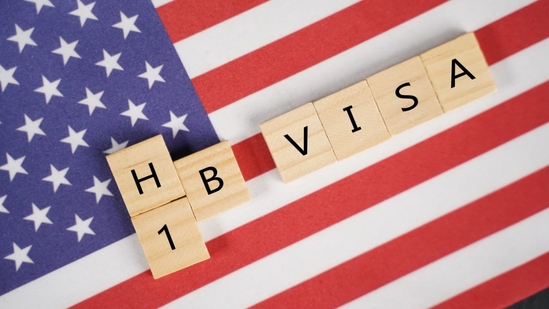H-1B visa registration for 2026 ends on March 24: Step-by-step guide on process
The program applies to employers seeking to hire non-immigrant aliens as workers in speciality occupations or as fashion models of distinguished merit, ability
The US Citizenship and Immigration Services (USCIS) will close the initial registration of H-1B visa cap for the fiscal year 2026 on March 24. USCIS said the registration, which opened on March 7, will run through noon (Eastern) on the last day.

According to the US Department of Labour (DOL), “The H-1B program applies to employers seeking to hire non-immigrant aliens as workers in specialty occupations or as fashion models of distinguished merit and ability. A specialty occupation is one that requires the application of a body of highly specialised knowledge and the attainment of at least a bachelor’s degree or its equivalent.”
ALSO READ | French scientist denied entry to US over private messages criticising Donald Trump
“The intent of the H-1B provisions is to help employers who cannot otherwise obtain needed business skills and abilities from the U.S. workforce by authorizing the temporary employment of qualified individuals who are not otherwise authorized to work in the United States.”
Here is a step-by-step guide on the petition filing process
A US employer willing to hire a foreign worker must be his sponsor and file the necessary petitions with the USCIS, which operates under the Department of Homeland Security (DHS).
Step 1: An employer/agent must submit the Labour Condition Application (LCA) to DOL for Certification. The employer/agent must apply for and receive DOL certification of an LCA.
LCA must be certified by the Department of Labor (DOL) before an employer can file Form I-129 with USCIS.
Step 2: An employer/agent must submit the petition for a non-immigrant worker, Form I-129, at the correct USICS location or online.
Step 3: Prospective foreign workers apply for a visa and/or admission into the US.
When Form I-129 is approved, foreign workers must apply with the US Department of State (DOS) for a visa at a US embassy or consulate if they are outside the US. If they are already in the US in a valid status, they would apply for a change of status rather than a visa.
Regardless of an individual's profession needing a visa, an application must be submitted to the US Customs and Border Protection (CBP) for admission to the US in the H-1B classification.
ALSO READ | H-1B visa to undergo massive changes from today: Here are tips for last-minute preparations
Labour Condition Application (LCA) - An employer must provide certain attestations of compliance with labour requirements. These include an understanding that the H-1B worker will be paid “a wage that is no less than the wage paid to similarly qualified workers or, if greater, the prevailing wage for the position in the geographic area in which the H-1B worker will be working.”
Annual cap - According to the USICS, the H-1B classification has an annual numerical limit (cap) of 65,000 for new statuses/visas each fiscal year (with certain deductions and additions based on H-1B1 set asides and usage).
An additional 20,000 petitions filed on behalf of beneficiaries who have earned a master’s degree or higher from a US institution of higher education are exempt from the cap.
Additionally, H-1B workers who are petitioned for or employed at an institution of higher education or its affiliated or related nonprofit entities, a nonprofit research organization, or a government research organization, are not subject to this numerical cap.
Over 70% of all H-1B visas issued between October 2022 and September 2023 were received by Indian skilled workers, according to data shared in the Rajya Sabha.






